Are you torn between the breathtaking landscapes and vibrant cultures of Ireland and Scotland? SIXT.VN understands the dilemma! We’re here to help you decide which Celtic adventure best suits your travel dreams, offering seamless travel solutions in Vietnam and beyond. Let SIXT.VN guide you through their stunning scenery, rich history, and unforgettable experiences, ensuring an unforgettable trip.
1. Scotland and Ireland: Unveiling Their Locations
Before delving into the “Ireland Vs Scotland Tourism” debate, understanding their geography is key.
Scotland, the northernmost country in the UK, boasts a mainland and approximately 800 islands. About 93 of those islands are inhabited and ripe for exploration.
Ireland, often called the “Emerald Isle,” comprises two countries: Northern Ireland (part of the UK, capital: Belfast) and the Republic of Ireland (capital: Dublin).
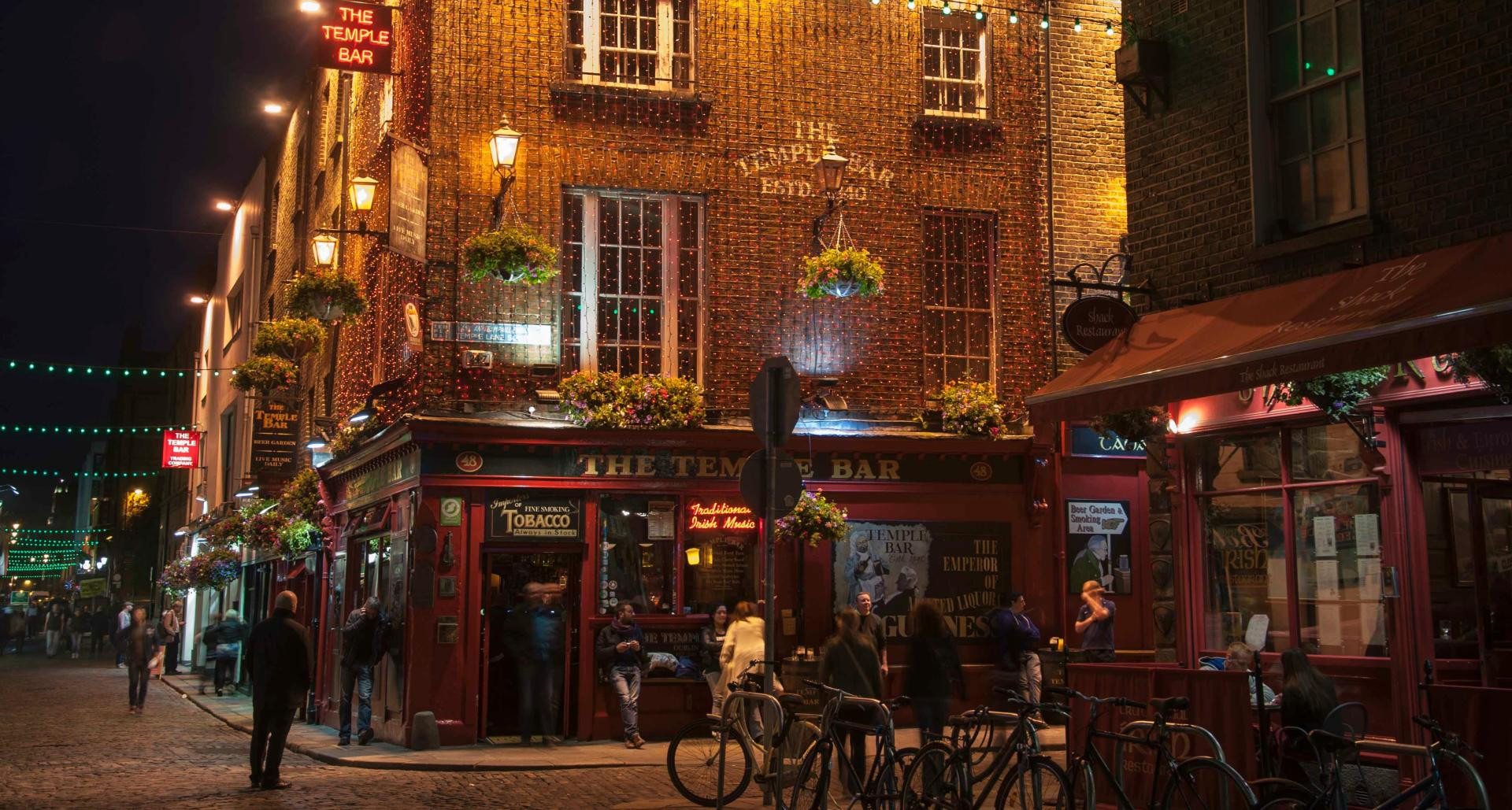 Temple Bar district, Dublin, Ireland
Temple Bar district, Dublin, Ireland
1.1. Reaching Ireland and Scotland: Your Gateway
Flying is the most straightforward way to reach both Scotland and Ireland from across the globe. Ferry routes from mainland Europe also offer a scenic alternative.
Scotland’s major international airports, Edinburgh and Glasgow, receive direct flights from North America and Europe. Glasgow Prestwick, Aberdeen, and Inverness airports also offer flight options. Direct flights originate from cities like Atlanta, Boston, Calgary, Chicago, New York, Orlando, Toronto, Washington DC, Amsterdam, Frankfurt, London, Madrid, Paris, and Reykjavík. Travelers from other regions will typically connect through major hubs like London Heathrow, Paris Charles de Gaulle, or Amsterdam.
Most international flights to Ireland arrive at Dublin, Belfast International, or Cork airports. Non-stop flights are available from numerous major US cities, plus over 120 European cities offer direct routes to Dublin.
Ferries are an option from Europe (Spain or France) and ports in England, Scotland, and Wales. Reaching Scotland by boat from Europe requires passage through England.
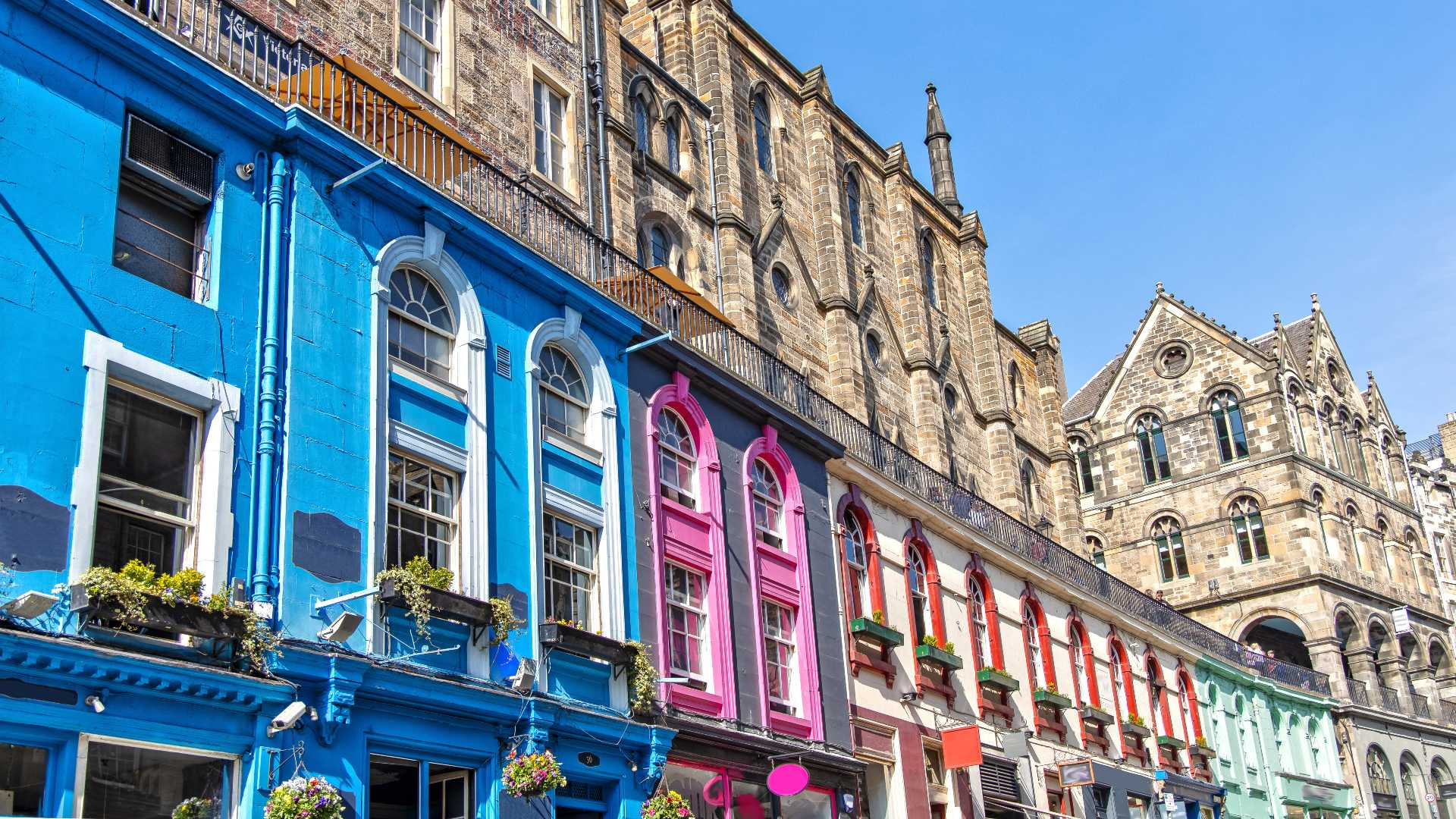 Victoria Street, Edinburgh, Scotland
Victoria Street, Edinburgh, Scotland
1.2. Scotland to Ireland Distance
Scotland and Ireland are only 12 miles (19 kilometers) apart at their closest points. The North Channel separates them, with the narrowest point between the Mull of Kintyre in Scotland and Torr Head in Northern Ireland. Clear days offer views of the opposite shore.
1.3. Exploring Ireland and Scotland: Getting Around
Traveling within Ireland and Scotland is convenient. Renting a car offers maximum freedom. Self-drive tours let you set your pace and explore freely. Companies like SIXT.VN handle accommodations, transportation, and extras.
Small group tours offer a local guide who manages driving and showcases each country’s highlights. Private tours provide a personalized, guided experience. Multi-day trips, especially in Scotland, allow you to stay in Edinburgh and take guided day trips.
Public transportation connects major cities and attractions in both countries.
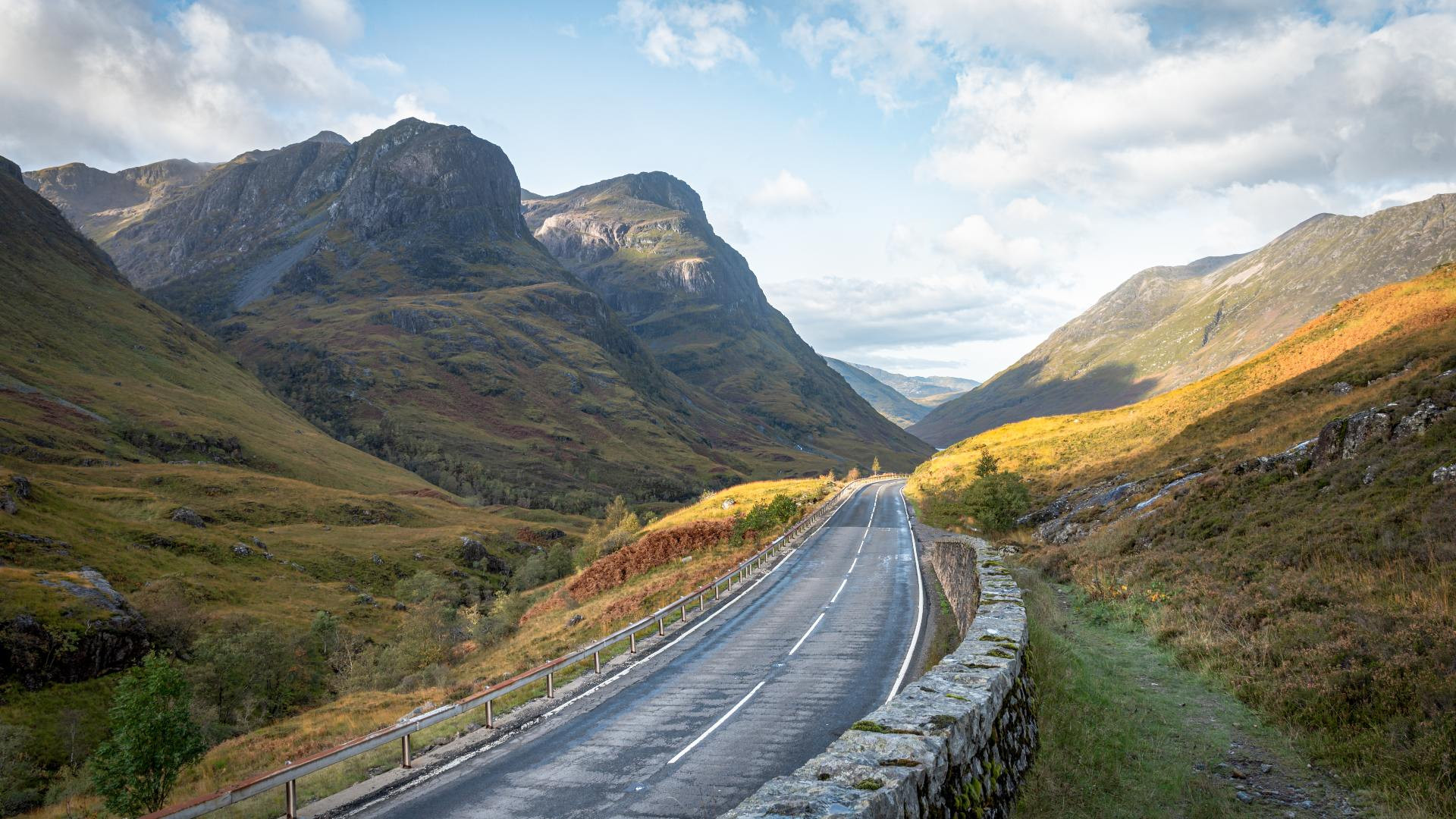 Road through Glen Coe, Scotland
Road through Glen Coe, Scotland
2. Scotland and Ireland: Climate Expectations
Both Ireland and Scotland enjoy a temperate maritime climate, resulting in mild weather year-round. Average summer temperatures hover around 15°C (59°F). A jacket is advisable, regardless of the season.
2.1. The Weather Reality
Scotland and Ireland, exposed to the Atlantic Ocean, are known for wet and windy conditions. Weather patterns are unpredictable, with frequent changes. Weather varies regionally; for example, western coasts experience more rainfall, creating a moody atmosphere, while regions like Scotland’s Firth of Forth are drier. Edinburgh’s annual rainfall is comparable to Barcelona’s and less than New York’s.
2.2. Is Scotland Colder Than Ireland?
Scotland generally experiences slightly lower temperatures due to its northerly location and mountainous terrain. However, the difference is often negligible.
2.3. Best Times for Scotland and Ireland Tourism
Each season offers unique charms:
- Spring (April-May): Spring blooms bring color to cities and countryside. You might see bluebells, daffodils, and cherry blossoms. It’s also a quieter time to visit major attractions.
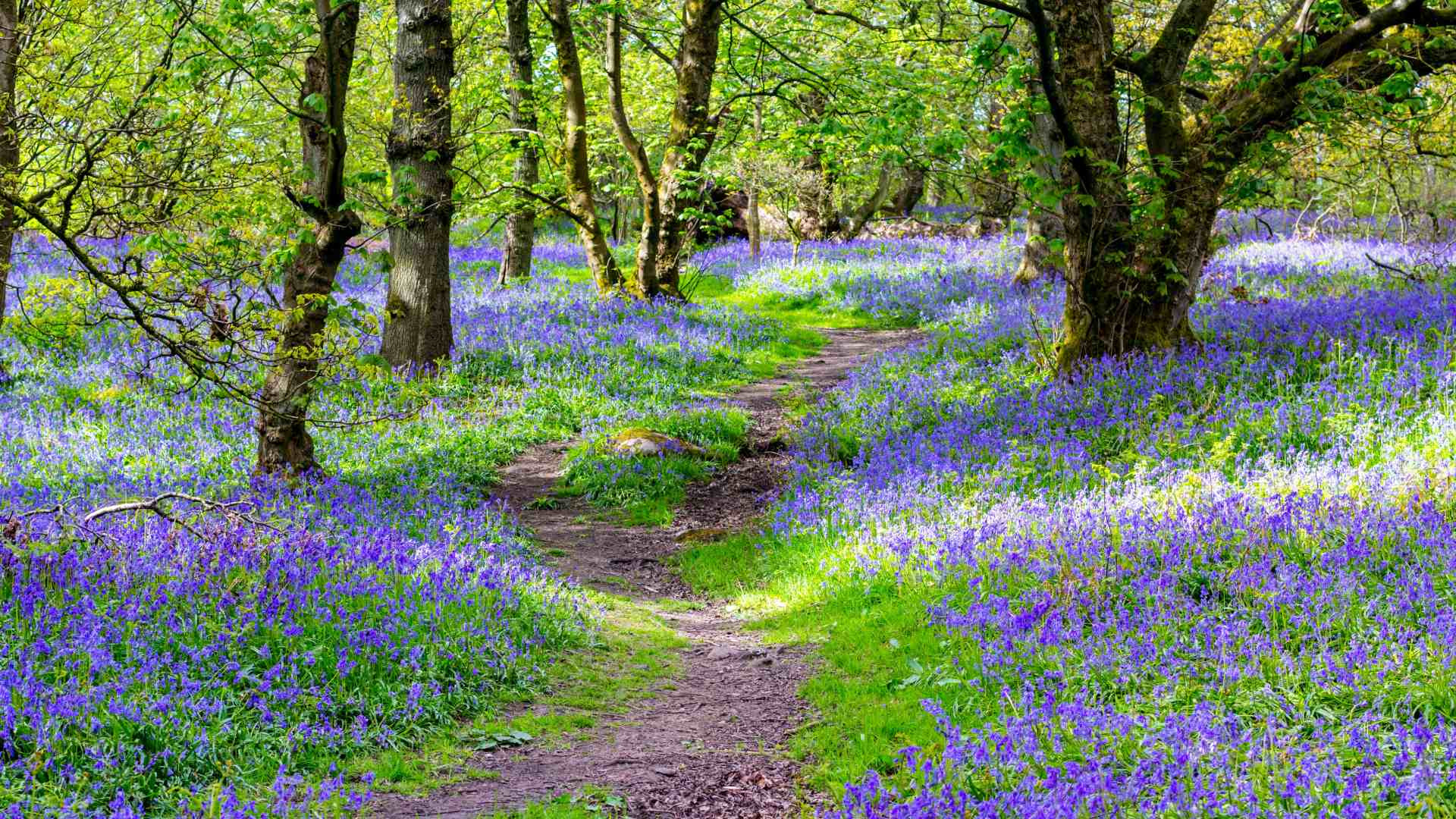 Bluebells carpeting a forest floor in Scotland
Bluebells carpeting a forest floor in Scotland
-
Summer (June-Mid-September): Mildest weather and long daylight hours make it a popular time.
-
Autumn (Mid-September-November): Quieter, with fiery red and orange foliage.
-
Winter (November-March): Changeable conditions, with potential snow or frost on mountain peaks. Enjoy cozy nights in traditional pubs. Consider Christmas or Scotland’s Hogmanay celebrations for New Year.
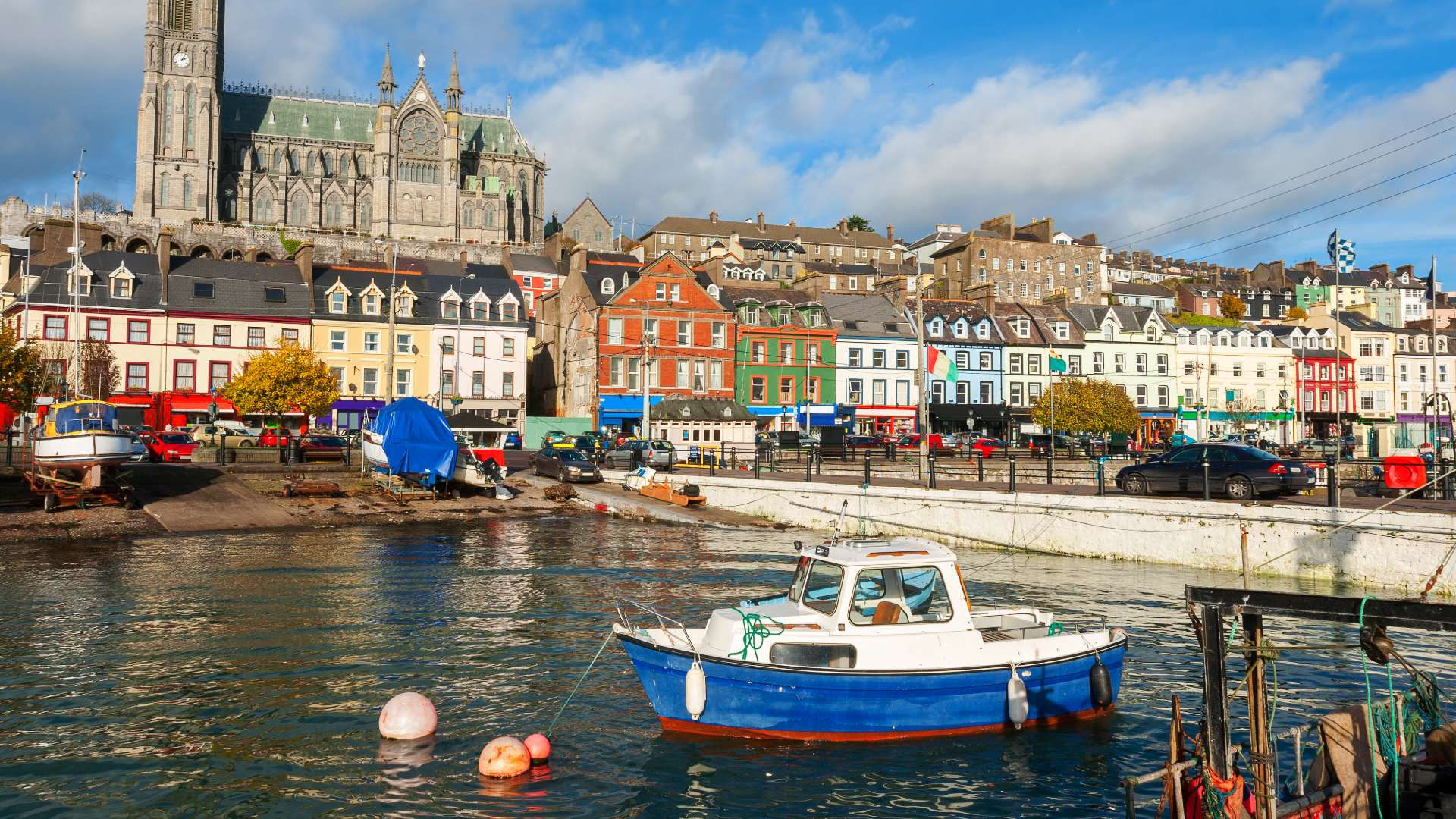 The harbour at Cobh. County Cork, Ireland
The harbour at Cobh. County Cork, Ireland
3. Scotland and Ireland: The Scenery Showdown
Both Scotland and Ireland offer breathtaking vistas and diverse landscapes.
3.1. Which is More Beautiful: Scotland or Ireland?
Scotland is famed for its mountains, glens, and stunning beaches. Cities like Edinburgh and Glasgow are also major draws.
Ireland, the “Emerald Isle,” boasts rolling green hills. The Cliffs of Moher and Slieve League Cliffs offer some of Europe’s most impressive rock faces.
3.2. Scotland’s Must-See Places
Scotland blends cultural highlights with natural wonders.
Edinburgh’s Old and New Towns are a UNESCO World Heritage Site, celebrated for literary history and architecture. August brings the Edinburgh Fringe, the world’s largest arts festival. Edinburgh Castle is a must-see.
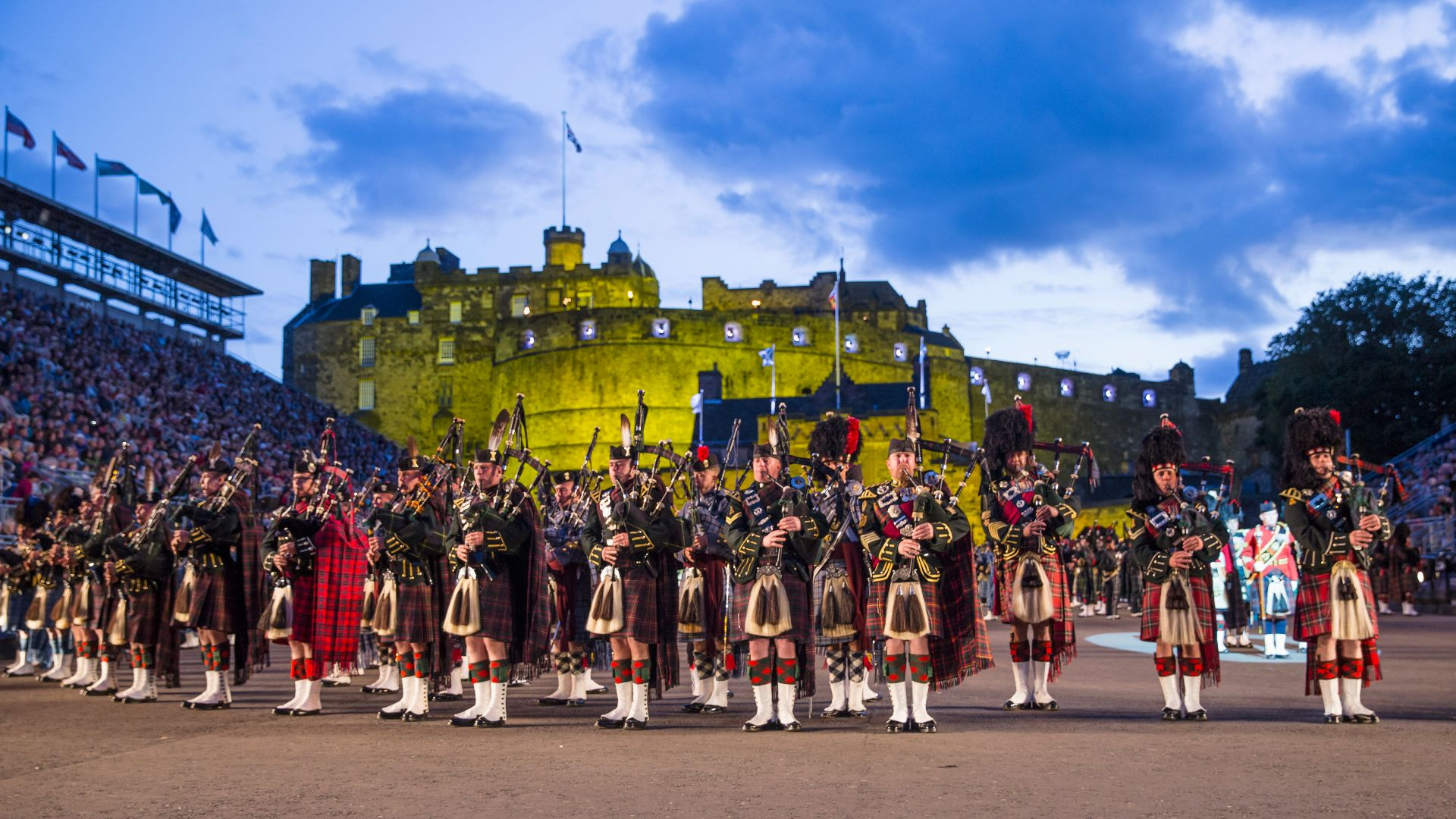 Royal Edinburgh Military Tattoo, Scotland
Royal Edinburgh Military Tattoo, Scotland
The Scottish Highlands and islands beckon. Loch Ness offers the mystery of the Loch Ness Monster. The Isle of Skye boasts sea views, villages, and rocky landscapes. Visit Scotland’s castles, including ruins, estates, and fortresses.
3.3. Ireland’s Top Destinations
Ireland offers diverse attractions. Explore historic cities like Dublin and Belfast, then venture into the countryside.
The Wild Atlantic Way stretches along the west coast, from Malin Head in County Donegal to Kinsale in County Cork, featuring national parks and fishing villages, including the Ring of Kerry.
Other highlights include Connemara National Park and the Giant’s Causeway.
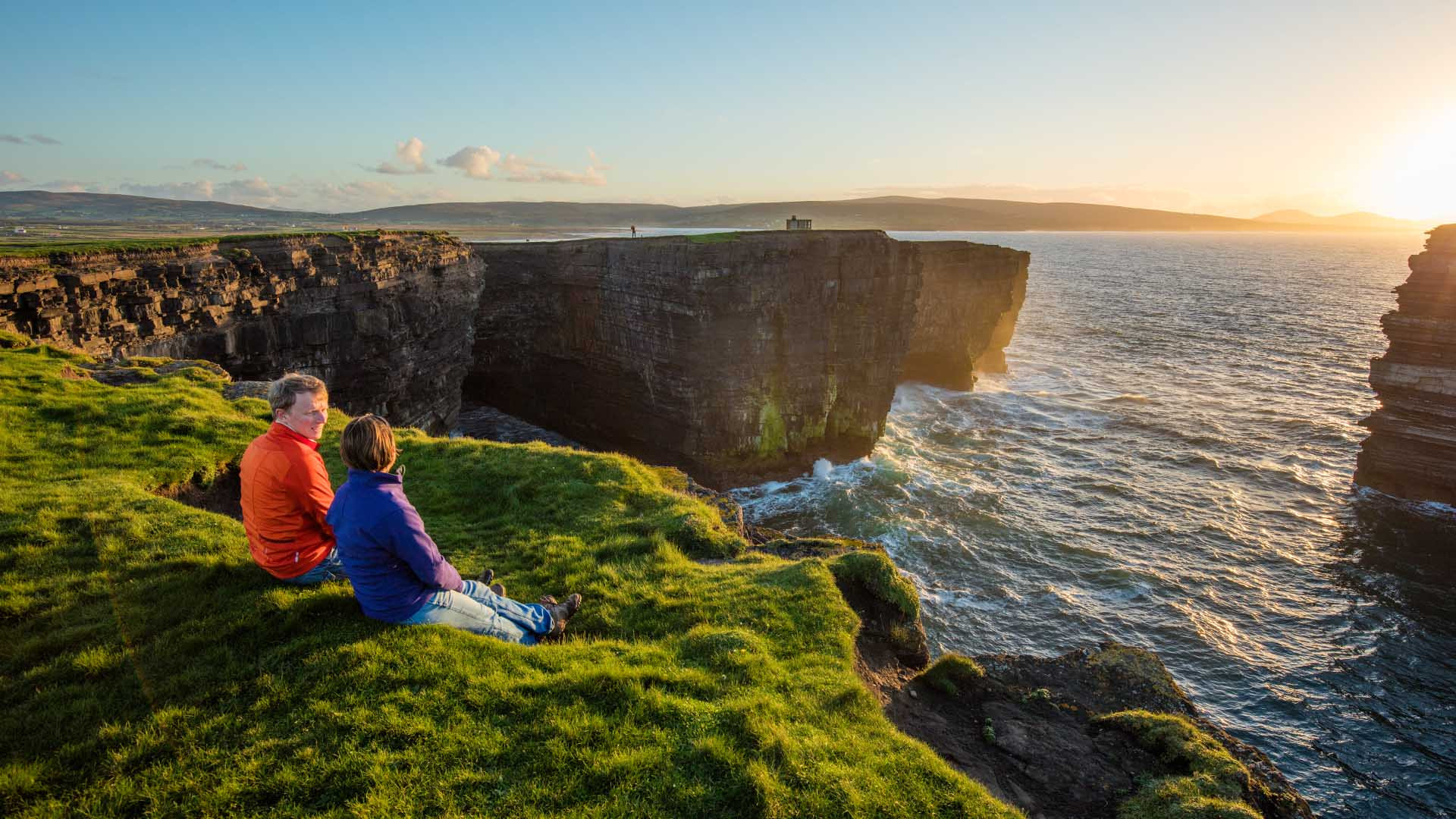 Downpatrick Head, Ireland
Downpatrick Head, Ireland
4. Scotland and Ireland Tourism: Cultural Immersion
The Scots and Irish are known for hospitality, humor, and a lighthearted approach to life. Their histories are intertwined.
4.1. Friendliness Factor: Scotland vs Ireland?
Both Scottish and Irish people are known for being friendly and welcoming. Expect hospitality and conversation in pubs and guesthouses.
4.2. Castle Count: Which Reigns Supreme?
Ireland is estimated to have had as many as 30,000 castles, though many are lost to time. Blarney Castle (home of the Blarney Stone) and Bunratty Castle (a 15th-century fortress) are popular.
Scotland has around 2,000 castles. Eilean Donan and Kilchurn Castle evoke a world of clans and warriors.
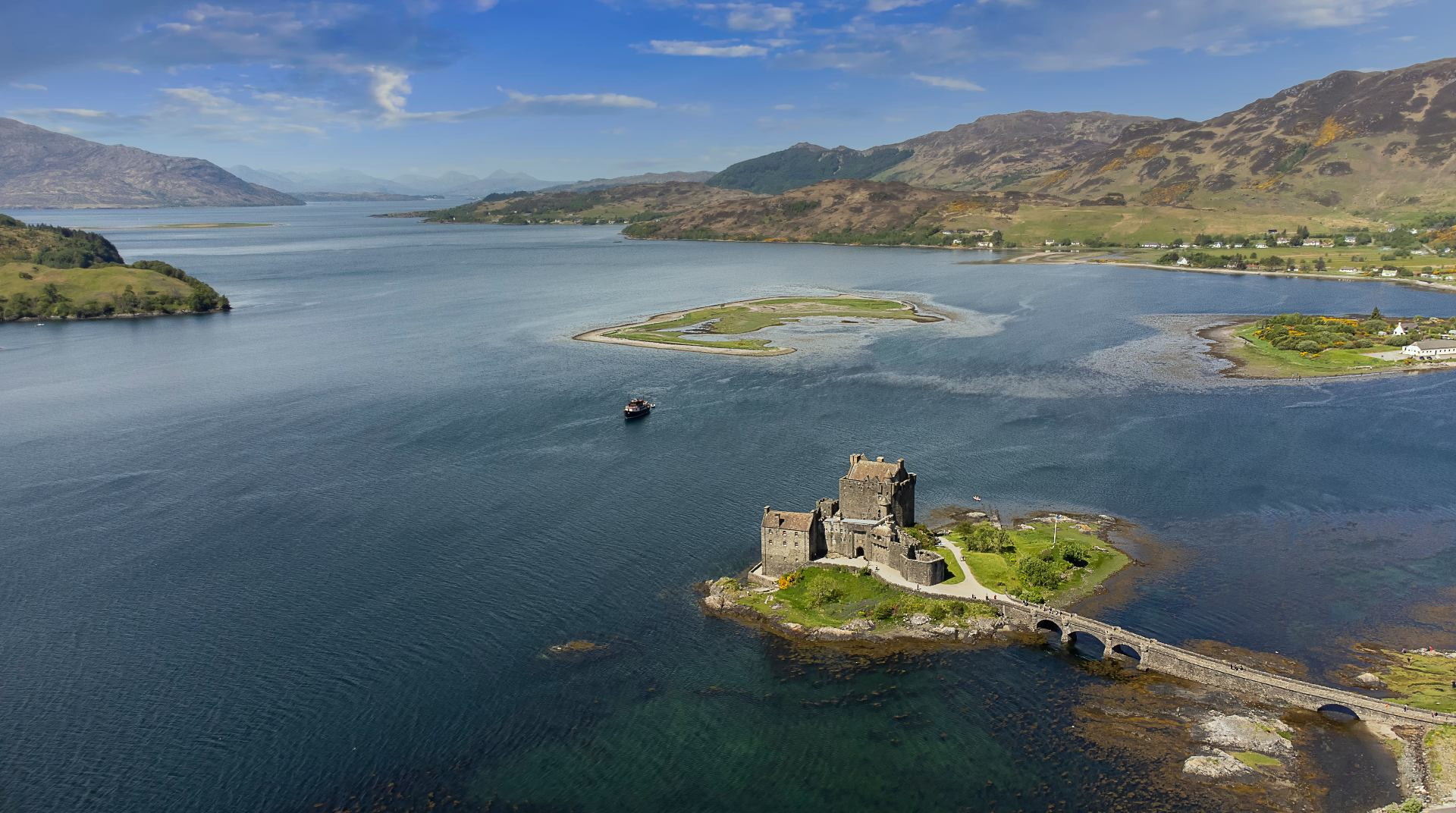 Loch Duich and Eilean Donan Castle, Scotland
Loch Duich and Eilean Donan Castle, Scotland
4.3. Culinary Delights: A Taste of Scotland and Ireland
Scottish and Irish cuisine share similarities: fresh seafood, international restaurants, and traditional delicacies.
Scotland’s haggis (sheep’s stomach with minced meat, spices, oatmeal, and onion) is a must-try. Vegetarian versions are also available.
Ireland is known for Irish stew (beef and potatoes), often served with colcannon (mashed potato and cabbage) and soda bread.
Beer and whisky are common and celebrated beverages.
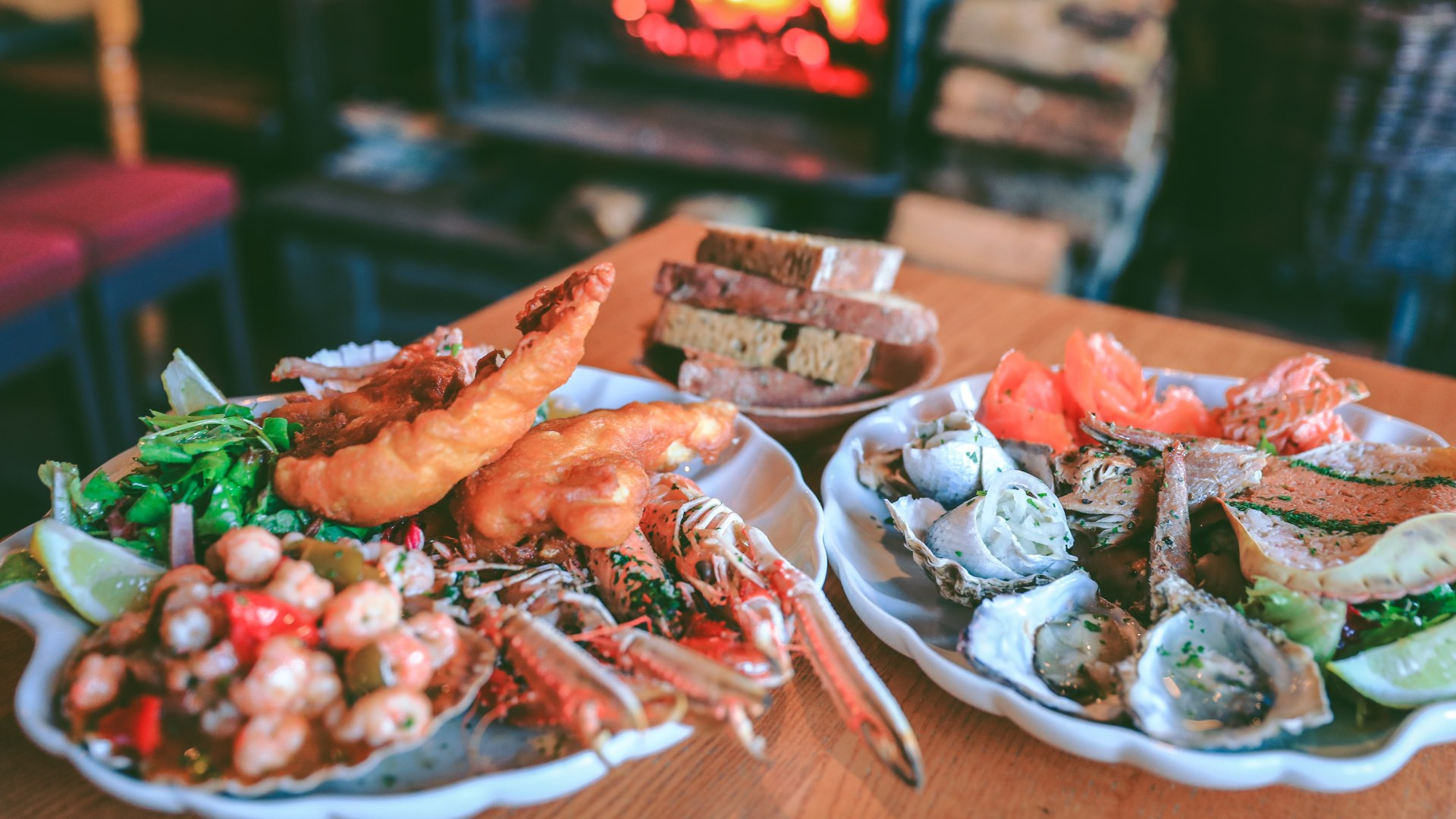 Seafood platter at Applecross Inn, Scotland
Seafood platter at Applecross Inn, Scotland
5. Ireland vs Scotland Tourism: Activities and Experiences
Scotland and Ireland offer cultural sights, outdoor activities, food and drink tours, and more.
5.1. Scotland’s Top Activities
- Explore Edinburgh’s Old Town: Visit Edinburgh Castle and Holyrood Palace on a Royal Mile walking tour.
- Go Island Hopping: Explore islands like the Isle of Mull, Outer Hebrides, and Isle of Skye.
- Visit Filming Locations: Discover Outlander and Harry Potter filming locations.
- Venture to the Scottish Highlands: Explore mountains, glens, and forests.
- Take a Scottish Food Tour: Sample fresh ingredients like scallops and venison, plus whisky, haggis, and Irn-Bru.
5.2. Ireland’s Best Activities
- Discover Literary Dublin: Explore literary landmarks.
 Library in Trinity College, Dublin, Ireland
Library in Trinity College, Dublin, Ireland
- Go on an Irish Road Trip: Coastal and city routes offer memorable experiences.
- Witness Seascapes on the West Coast: Explore cliffs, geology, and islands.
- Experience Irish Music: Attend a concert or visit a local pub.
- Dive into Irish History: Uncover the nation’s past.
FAQ: Ireland vs Scotland Tourism
5.3. How to Visit Ireland and Scotland
Don’t limit yourself to just one destination. Combined Scotland and Ireland tours allow you to experience both.
Companies like SIXT.VN offer self-drive trips, small group tours, and private guided packages. Local experts book accommodations, car rentals, and transportation between Scotland and Ireland.
SIXT.VN makes planning your trip easy, whether you prefer self-drive adventures or guided experiences. Our local experts are ready to handle accommodations, car rentals, and connections between these captivating destinations.
1. What is the best time of year to visit Ireland and Scotland for good weather?
The best time to visit Ireland and Scotland for good weather is during the summer months, from June to mid-September. This period offers the mildest temperatures and the longest daylight hours, making it ideal for exploring the scenic landscapes.
2. Are Scotland and Ireland expensive countries to visit?
Both Scotland and Ireland can be moderately expensive countries to visit, especially in tourist hotspots. However, costs can be managed by planning ahead, utilizing public transportation, and choosing budget-friendly accommodations and dining options.
3. Is it easy to travel between cities in Scotland and Ireland?
Yes, it is relatively easy to travel between cities in Scotland and Ireland. Both countries have well-developed public transportation systems, including trains and buses, making it convenient to explore different regions.
4. What are the must-try traditional foods in Scotland and Ireland?
In Scotland, must-try traditional foods include haggis, Scotch broth, and Cullen skink. In Ireland, be sure to sample Irish stew, colcannon, and soda bread.
5. How can SIXT.VN help me plan my trip to Scotland or Ireland?
SIXT.VN offers comprehensive travel solutions that can assist in planning your trip to Scotland or Ireland. We provide services such as airport transfers, hotel bookings, and tailored tour packages to ensure a hassle-free and enjoyable travel experience. Contact us at +84 986 244 358 or visit our website at SIXT.VN for more information.
6. What are some of the best historical sites to visit in Scotland and Ireland?
Scotland boasts historical sites like Edinburgh Castle, Stirling Castle, and the Culloden Battlefield. Ireland offers sites such as Dublin Castle, the Rock of Cashel, and the ancient passage tomb of Newgrange.
7. Are guided tours recommended for exploring Scotland and Ireland?
Guided tours are highly recommended, especially for first-time visitors. They provide valuable insights into the history, culture, and natural beauty of both countries, enhancing your overall travel experience.
8. What types of outdoor activities are popular in Scotland and Ireland?
Popular outdoor activities include hiking in the Scottish Highlands and the Wicklow Mountains in Ireland, exploring national parks, golfing on world-class courses, and enjoying water sports along the coasts.
9. Can I use public transportation to get around in both countries?
Yes, both Scotland and Ireland have reliable public transportation systems. Trains and buses connect major cities and towns, making it easy to explore without renting a car.
10. What is the best way to experience the local culture in Scotland and Ireland?
To experience the local culture, visit traditional pubs, attend local festivals and events, engage with the friendly locals, and immerse yourself in the music, dance, and storytelling traditions of each country.



